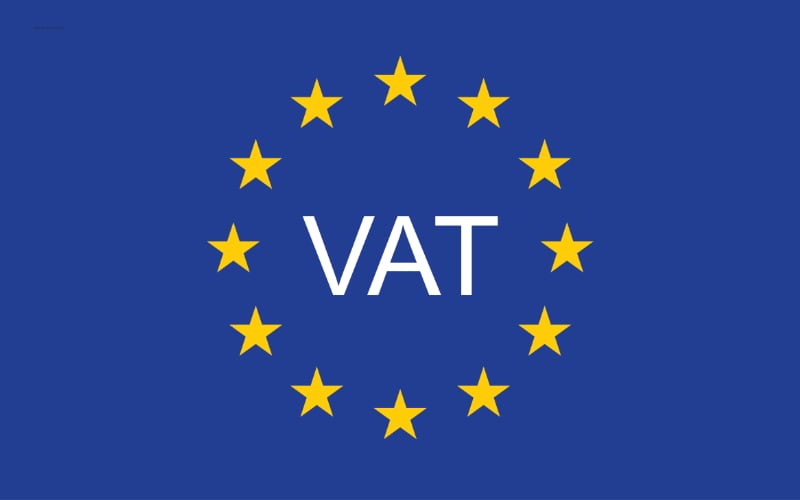VAT on shipping in the UK and overseas
VAT has always been one of the more complicated taxes. It’s applicable to most products but not all and the rate of tax varies. The arrival of Brexit and the UK’s withdrawal from the European Union have done little to improve the reputation of VAT and make the situation seem clearer. There is still confusion around how VAT works when doing business with Europe.
 An area that causes misunderstanding is how VAT relates to shipping. Shopping online has seen a significant increase as a result of the pandemic and consumers are often surprised by the shipping costs, and VAT charges, applied even when buying from inside the UK.
An area that causes misunderstanding is how VAT relates to shipping. Shopping online has seen a significant increase as a result of the pandemic and consumers are often surprised by the shipping costs, and VAT charges, applied even when buying from inside the UK.
While VAT might seem a tricky grey area that really isn’t the case when it comes to shipping costs. Whether you’re buying online or sending products for your business the basic principles of VAT are more straightforward than you might think.
What is VAT?
Value Added Tax (VAT) is a consumption tax. It’s applied to the majority of goods and services at a rate of 20%, 5% or zero per cent. Do note at this point that it relates to products consumed in the UK as well as services.
A small number of items are exempt from VAT and these include things like postage stamps and insurance.
Businesses with a turnover of VAT rated goods above £85,000 are required to register for VAT. It is possible to register prior to that voluntarily which means you must charge VAT but can also claim it back.
Don’t forget VAT is a tax. Don’t think of it as income for the company making the charge. Instead, remind yourself that it is being collected by them and passed on to the government.
VAT on shipping in the UK
It can be a bit of a surprise to realise that VAT is charged on shipping in the UK. When we buy something in a shop on the High Street we don’t really think about VAT because it is included in the price. When you order something online if the company is VAT registered then VAT is added to the delivery cost. This is because it is a tax applied on services as well as goods. Arranging postage and delivery of an order is considered to be a service. You may have spotted above that postage stamps are exempt from VAT and that wasn’t a typo. Postage stamps themselves are VAT free but when you post an item to a customer you are providing a service and that’s where VAT comes in.
Additionally, not charging VAT on shipping would create an opportunity for tax evasion that HMRC would be keen to avoid. If delivery was VAT free then the cost of goods could be reduced and shipping costs pushed up as a way to avoid paying tax.
How much VAT is charged on delivery is based on the VAT rate of goods. So it’s easy if everything you sell has the same rate. However, an online shop that sold goods with a mix of rates would need to take this into account when adding VAT to their shipping rate. The tax needs to be applied proportionally by looking at the percentage of the total goods at each rate makeup.
To calculate this look at the cost of the goods before applying the shipping charge and see what percentage of the total is made up of goods at each rate. Then apply that breakdown to the shipping total. For example, if a £10 purchase is made up of a £7.50 item rated at 20% and a £2.50 item rated at 5% then 25% of the shipping cost will have 5% VAT and the remaining 75% will need the 20% rate applying.
If you’re not certain of the VAT rate for an item check the list on the HMRC website or talk to our VAT specialist at Tax agility.
The VAT should always be added to the total of the invoice and it’s this that can be off-putting for consumers online when they realise how much their shipping will cost. Of course, customers will only be playing a single shipping charge and some may use this as a reason to buy more and justify the cost. Others may abandon their baskets particularly if they are buying lower-cost products.
There’s no clear way to stop VAT on shipping from impacting your sales. However, there are a few approaches retailers can explore. Encouraging making more than one purchase may work as it will give a lower ratio of postage to item. Alternatively, increasing prices slightly and introducing free delivery for sales above a certain amount may make the difference. Free shipping is also VAT free but means the company will have to bear the cost of it and potentially make it up in the price of goods.
How does Brexit impact VAT on shipping?
With Brexit blamed for introducing extra complications and paperwork, it’s not unreasonable to assume that it must have an impact on VAT, and probably a negative one.
After all, in 2014, the introduction of VAT charges for digital products in the EU caused consternation amongst small businesses as it required the vendor to pay VAT on products in the country the purchaser lived in. Given the UK’s high minimum threshold for VAT, many small businesses were not registered and the potential costs associated with the change would have likely put them out of business.
But when it comes to the question of whether UK companies need to charge VAT on shipping post Brexit, the answer is clear.
VAT is charged in the country where the goods are used or the services are carried out. So for EU customers VAT applied is the location they reside in.
This means that VAT does not need to be charged in the UK on goods sent overseas or on international shipping. A rate of zero can be applied which extends to the shipping. Companies will need to ensure that they have paperwork in place to show that the items went outside the UK. Keeping the paperwork for 6 years is a requirement.
It is worth noting though that while there is no VAT on shipping, there is a good chance that the country you are shipping to will require import VAT to be paid. This is charged by the country that you are shipping to and as a result, will vary. To find out if this is the case, the process and whether it can be charged at the point of sale, you’ll need to check with their equivalent of the HMRC.
https://www.sage.com/en-gb/blog/customs-and-vat-after-brexit/#vat-anchor-link
An exception to the above is Northern Ireland where the rate charged will depend on whether goods are going to the EU or the rest of the World.
VAT and Shipping
Applying the basic principles of VAT makes understanding how it relates to charges on carriage quite straightforward. It doesn’t need to be confusing when it comes to shipping internationally or in the UK.
Just remember:
- VAT registered companies in the UK have to charge VAT on shipping costs because it is a service.
- The VAT charged on shipping is proportional to the VAT rates applied to the goods. The government refers to this as, “follows the liability of the goods”.
- Goods shipped overseas are not subject to VAT in the UK and there is no VAT on their shipping.
- Individual countries, including the UK, usually charge import VAT in the final place of consumption.
- Businesses need to keep their VAT paperwork.
VAT is a broad area of taxation and to ensure that your business complies it’s always best to consult VAT experts like TaxAgility who know the ins and outs of the legislation.

